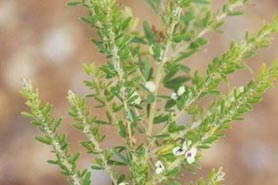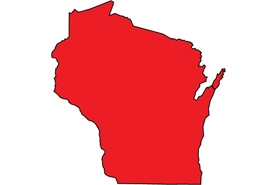Sericea lespedeza
(Lespedeza cuneata)
Herbaceous perennial is 2-4’ tall with multiple stems that die back to the ground yearly. Stems are stiff and angled about 45^O from the ground or each other and die back to the ground each year. Stems are light green, strongly ridged, and covered with white hairs. Lower stems become brown and woody and lose most of their hair as they mature.
Other names for this plant include:
- Common names: silky bush clover, Chinese bush clover, perennial lespedeza
- Scientific names: L. sericea; L. juncea ssp. service; Anthyllis cuneata
Classification in Wisconsin: Prohibited
- Ecological Threat
-
- It is tolerant of many habitat types: fields, roadsides, upland woods and prairie restorations.
- It forms dense colonies that crowd out native vegetation and sericea lespedeza produces an extensive seed bank.
- Identification
-
Leaves: The alternate compound leaves are trifoliate with short petioles. Leaflets are narrow, oblong and have smooth margins. The upper surface is dull green and hairless while the lower surface is covered with silky hairs.
Flowers: 1-4 pea-like flowers develop from leaf axils on short stalks. Petals are white or cream with a patch of purple at the base. It blooms in early fall for about one month.
Fruits & seeds: Each flower produces a short hairy seedpod containing one seed. Seeds are viable for up to 20 years.
Roots: Stout taproot.
- Control
-
Mechanical: Mow plants in the flower bud stage for several consecutive years to reduce root reserves and limit seed production.
Chemical: Foliar spray with triclopyr or clopyralid with non-ionic surfactant in mid-summer.
For more information on control techniques, visit the Sericea lespedeza factsheet [exit DNR] by the University of Wisconsin-Extension.
- Resources
- Sources for content:
- Remaley, Tom. Plant Conservation Alliance Factsheet: Chinese lespedeza [exit DNR]. Last updated June 29, 2010.
- Hilty, John. Illinois Wildflowers. Weedy Wildflowers of Illinois – Silky bush clover [exit DNR] (Lespedeza cuneata).


